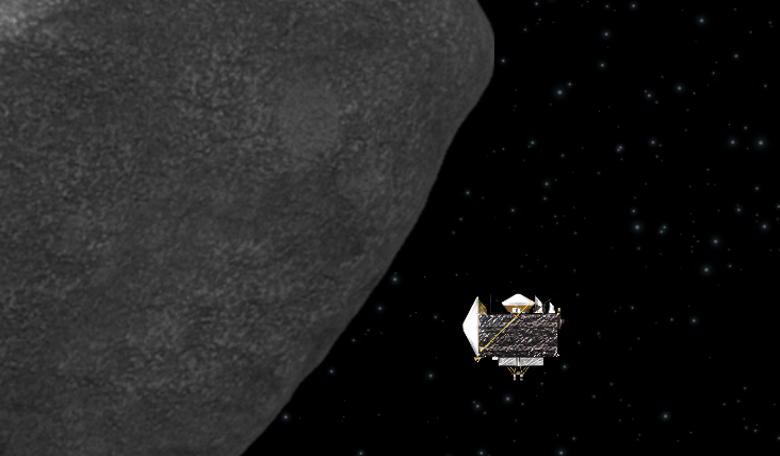Whizzing around approximately 122,187,449 kilometres from Earth is a carbon-rich, 500-metre diamond-shaped asteroid, which could help scientists unravel how the Solar System formed and soon another of NASA’s daring missions will get an up close look at it.
Due to officially arrive today at the near-Earth asteroid Bennu, is the Origins Spectral Interpretation Resource Identification Security – Regolith Explorer, or OSIRIS-REx for short.
This complex-sounding, state-of-the-art spacecraft is equipped with seven instruments and devices to study, then sample this potentially hazardous object. Bennu is possibly a fragment of a once much larger object from the Polana family of asteroids and is made up of material that could have remained unchanged since it clumped together during the first 10 million years of the Solar System's formation.
The asteroid may therefore contain the molecular precursors to the origin of life and the Earth’s oceans, so before it makes a collision course with our planet – a possibility that could occur late in the 22nd Century – and its chemical make-up is obliterated beyond all recognition, scientists aim to take a small piece of this pristine material and bring it back for further study.
OSIRIS-REx started its epic mission back in September 2016 and after spending a year orbiting the Sun, it used the Earth as a sling-shot to propel it towards its target, clocking up an impressive 2,030,537,605 kilometres in its journey to date. The spacecraft then got its first proper look at Bennu back in August of this year when it took its first image of this relic of the Solar System.
Once the spacecraft is stationed in orbit around the asteroid, it will make a total of five passes over the north pole, equator, and south pole at a range of seven kilometres (4.3 miles) and undertake a detailed survey that will last over a year.
The spacecraft’s primary science goals are to map the chemistry and mineralogy of the primitive asteroid, estimate Bennu’s mass, refine the asteroid’s spin state model, and generate a global shape model at a resolution of 75 centimetres.
It will also measure something known as the Yarkovsky effect; an effect which occurs when a small asteroid absorbs sunlight and is given a small push as it re-emits the energy as heat.
Of course the pièce de résistance will be a sample of the asteroid itself, and exactly whereabouts OSIRIS-REx’s extendable sampling arm will pluck this material from will be decided by the survey.
During the sampling procedure, the arm will release a burst of nitrogen gas as it makes contact with the surface of Bennu for about five seconds. This should stir up the surface regolith so that it can be captured in the sampler head. The spacecraft has enough nitrogen to allow three sampling attempts, to collect between 60 and 2000 grams (2–70 ounces).
Providing all goes well, the Sample Return Capsule, along with its carrier (OSIRIS-REx) will head back to Earth in March 2021 on a return trip that will last two and a half years. Its outer space adventure will end when the capsule separates from the spacecraft and enters the Earth’s atmosphere around September 2023.











